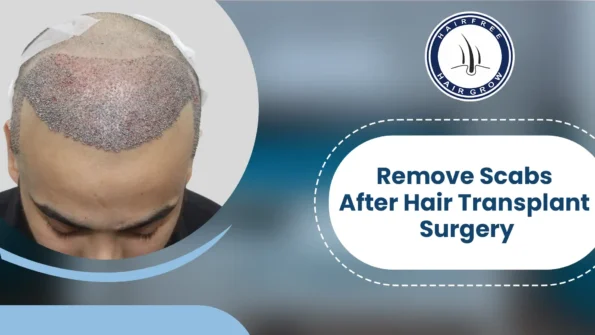After a hair transplant procedure, a person can expect to see small, crusty scabs on the scalp within 24 to 48 hours. These scabs may be white or yellowish in color and cover the areas where the hair follicles were transplanted. The skin around the surgical site will be red and inflamed, with small, dark scabs covering the area where the hair follicles were implanted. Learn how to safely remove scabs after hair transplant for better healing.
These scabs may also appear on the donor area where the hair was taken. Hair transplant scabs appear as small, dark spots scattered over the forehead and scalp. Some are raised and crunchy, while others are flat and dry.
How Do You Cope With the Scabs?
There can potentially be many issues with scabs after a hair transplant.
Many itching problems can occur after hair transplant. As the scabies wound needs to heal, it can be very itchy. However, it’s important not to scratch it because you can remove the grafts (or even create recurring scabs in the same place on your scalp).
You also want to avoid infection as it is not expected after this procedure. If you have an infection, this can have harmful effects on the graft. The risk is low – one study found infection and excessive bleeding in only 1.3% of patients.
It is important to follow the care instructions after hair transplant surgery. You will be able to use a specific shampoo after a few days to gently wash your hair. If the itching does not go away after 14 days, you should consider talking to a doctor or your surgeon. However, you may not shampoo vigorously enough and may be asked to try this first.
Is It Important to Remove Transplant Scabs?
It’s important to remove transplant scabs if they don’t fall off on their own. Here’s why it’s crucial:
- Reduce Itchiness: If you leave the scabs on, you might feel itchy and want to scratch them. But scratching can harm the hair growth from the transplant. So, it’s best to remove the scabs to avoid this.
- Prevent Scarring: Keeping scabs on your scalp can make you more likely to scratch or pick at them. This can lead to scarring or damage to the newly transplanted hair grafts. Removing the scabs helps prevent this.
Remember, scabs will naturally fall off at different times for different people. If you’re worried about them or they’re bothering you, it’s a good idea to seek advice. It’s essential to take care of your scalp after a transplant for the best results!
How Important is Hair Transplant Aftercare?
Hair transplant aftercare is crucial for the success of your procedure. Dealing with scabs after a hair transplant is common, but taking care of them properly is essential for the best results.
Scab Care
While scabs are a normal part of the healing process, they shouldn’t impede the growth of your newly transplanted hair. It’s important to gently wash your scalp to remove the scabs or seek guidance from your doctor if they are persistent.
Seek Professional Help
If you’re experiencing challenges with your hair transplant aftercare, consider seeking assistance from a reputable clinic like Hairfree Hairgrow Clinic. The experienced doctors and advanced hair transplant techniques can help you achieve a fuller head of hair and address any hair loss concerns effectively.
Written By
MBBS, DDV
Dr. Sanjay Sharma, a leading expert in hair restoration, specializes in techniques to remove scabs after hair transplant surgery. With extensive experience and a patient-focused approach, Dr. Sharma ensures optimal healing and successful hair transplant outcomes.
Disclaimer
We’ve made all possible efforts to ensure that the information provided here is accurate, up-to-date and complete, however, it should not be treated as a substitute for professional medical advice, diagnosis or treatment. See Detailed Disclaimers Here.


